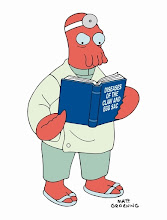I commonly see shoulder complaints in the clinic and more often than not these are non-traumatic injuries.
The shoulder joint is complex as previously described on this website however it is worth noting that it is still a relatively under evolved joint in the human body; on one side it provides excellent mobility key for many sports but on the flip side has poor stability leaving it prone to injury.
So often in our lives we find ourselves deskbound or more broadly using our arm in front of us in an elevated position (washing up, cooking). This over a prolonged period predisposes the shoulder to poor biomechanical stability.
The shoulder joint is complex as previously described on this website however it is worth noting that it is still a relatively under evolved joint in the human body; on one side it provides excellent mobility key for many sports but on the flip side has poor stability leaving it prone to injury.
So often in our lives we find ourselves deskbound or more broadly using our arm in front of us in an elevated position (washing up, cooking). This over a prolonged period predisposes the shoulder to poor biomechanical stability.
The main sight of most non-traumatic shoulder injuries I believe to be the thoracic spine. In many people extension (arching back) of this region is limited due to our ever increasing kyphotic (stooped) posture. As a consequence the scapulo-thoracic joint comes under increasing tension as the scapula are forced laterally (out) and superiorly (up) over the rib cage. This subsequently puts increasing stress on the associated musculature, commonly the Rhomboids major and minor leading to strain. The scapula is forced away from rib cage posteriorly (backward) on the medial (middle) boarder; this subsequently causes the same to happen to the Serratus anterior muscle; giving characteristic scapula dyskenesis (winging).
If we pause here to give thought to referral of pain; as muscles are chronically stretched they develop trigger points, these put simply are taught bands of muscle and irritation at the neuromuscular junction. Not only do these reduce the efficiency of the muscle but they too cause referral of pain to a distal site, this is to say that an irritation in one part of the body can be perceived by the brain as pain from another region, commonly we see this with myocardial infarction (heart attack) where pain is usually referred to the left shoulder and arm. With the shoulder Teres major and minor and Rhomboids major and minor usually refer there pain to the shoulder tip and therefore may be mistaken for acromioclavicular sprain.
With this mentioned about the shoulder, injured patients are all too often prescribed rotator cuff muscle internal and external strengthening exercises. (holding a theraband with elbow at 90degrees and turning the arm in and out). These exercises although good; if not done correctly and without addressing thoracic extension will have little or no benefit, they may even exacerbate this problem for if performed with a kyphotic posture and without setting the scapula the patient will engage the Pectoralis major and minor and Upper Trapezius muscles. This can increase the kyphotic posture by rounding the shoulders and it may also cause superior migration of the humerus (commonly seen in degeneration). This will reduce the space where the rotator cuff muscles pass through the joint to attachment sights leading to impingement syndrome and thus a direct shoulder problem.
I therefore conclude by stating that shoulder problems in my experience often occur not as a result of direct trauma or over training but as a consequence of poor postural imbalances mainly stemming from the thoracic spine. If this is addressed then not only will non-traumatic injury reduce but strength gains should also be observed.
Dr Tom Waller MChiro BSc. (Hons)
Doctor of Chiropractic
Doctor of Chiropractic


No comments:
Post a Comment